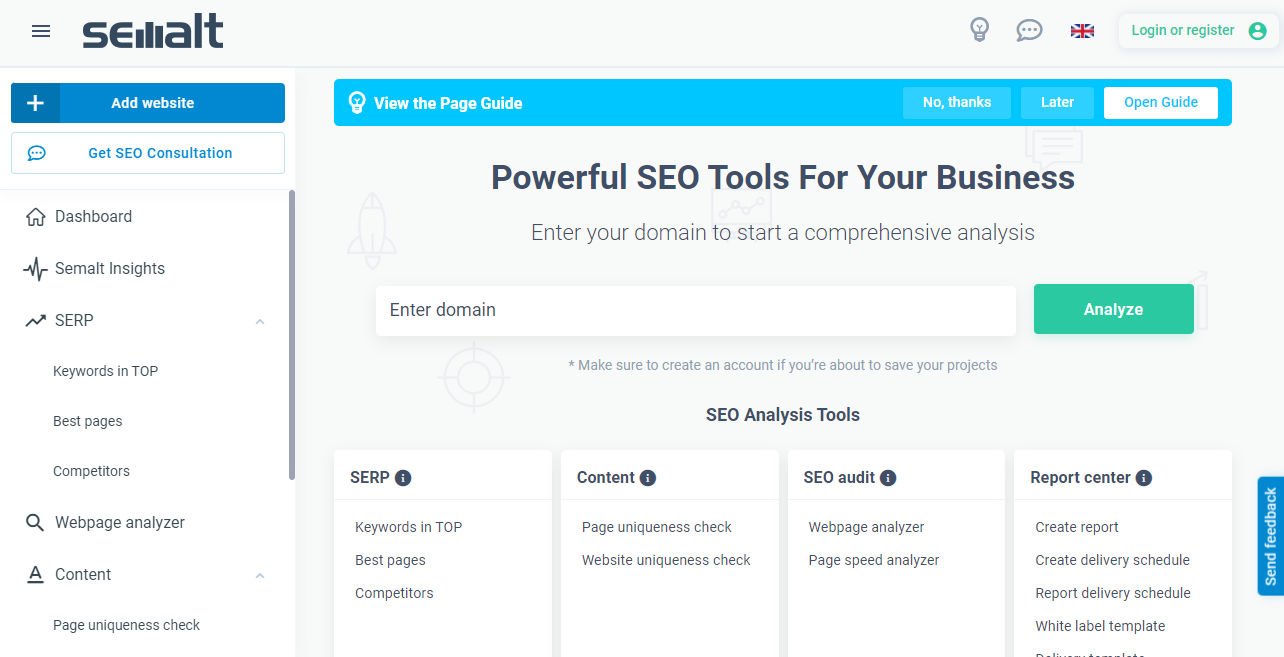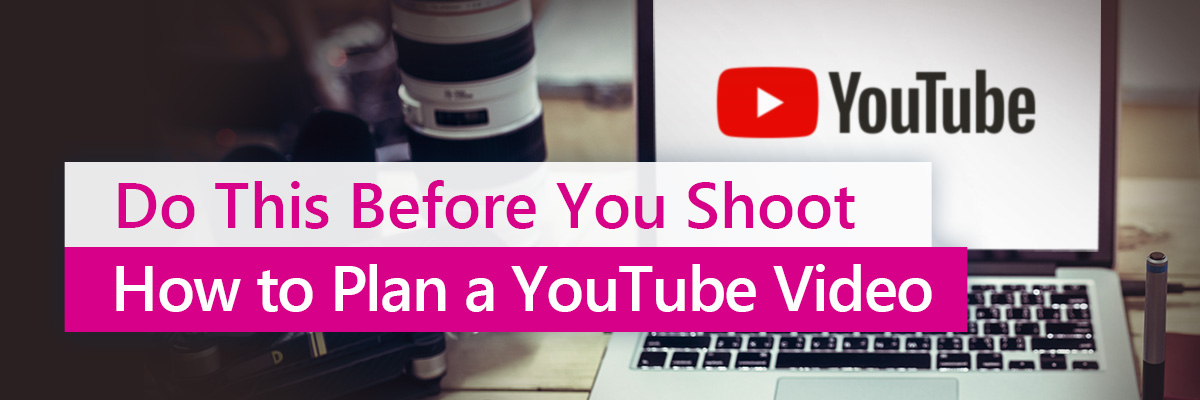YouTube SEO With Semalt: 8 Steps To Top Ranking

More and more companies are integrating YouTube into their content marketing. There is a reason for this: In addition to Google, users are increasingly turning to the video platform to get answers to their search queries.
With classic advertising, however, you cannot motivate users to click on YouTube. Rather, you need entertaining content with added value. However, around 500 hours of new video content is currently uploaded to YouTube every minute. That means the competition is big. So, if you are considering promoting your business on YouTube, this article is for you!
We will hereby show you how to tackle SEO on YouTube in our in-depth guide to getting clicks and conversions for your videos.
Why is YouTube SEO so important?

YouTube is a mix of a search engine and a social media channel. Users can search for information on the platform - such as an explanation or instructions - as well as subscribe to channels and like and comment on videos. Around 47 million adults in the UK currently use YouTube. This makes it the most important platform for moving images on the internet. The parent company Google is also increasingly showing YouTube videos in its SERPs. In practice, this means that you can increase your reach enormously with YouTube. It generates high organic visibility on the web and more clicks - and ultimately more sales.
Successful YouTube SEO: Here's how
First and foremost, YouTube is a search engine for videos. But how do you achieve high visibility with your (corporate) videos? You should be aware of this: YouTube SEO differs from classic SEO, as you know it on Google. We have therefore developed instructions with which you can quickly increase your visibility on the platform in 8 steps.
1. Thorough keyword research
As with Google, detailed keyword research is indispensable on YouTube. On the one hand, you can rely on keywords with a high search volume in order to attract the viewer's attention. On the other hand, it can be worthwhile in some industries to rely on niche keywords. So how do you find the right keywords for your videos?
Use SEO tools: The keyword tools you can use to discover relevant terms are not only available for Google. The online Dedicated SEO Dashboard tool, for example, shows which keywords are driving traffic on platforms like Google, Amazon, and also YouTube. So it can help you find the right keywords. Moreover, it gives you all the necessary information about the relevance of the keywords. This tool has a free 14-day trial version.

Use YouTube Autocomplete: Like Google, YouTube also uses autocomplete to suggest terms that users enter particularly often in the search mask. So type in various relevant terms in the search and collect the suggestions from YouTube. To make YouTube generate suggestions as openly as possible, you can also enter an asterisk before or after a search term. YouTube understands this as a "wildcard" and provides so many different keywords that are related to the given term.
Analyze competition: With these first two steps, you can usually already generate a long list of keywords. To define which terms are particularly relevant for your target group, take a look at the competition. For example, check which terms competitors use in the title and which keywords appear in the description text for the video.
In addition, you should enter your keywords into Google as a test. Normally, Google does not allow you to discover keywords relevant to YouTube video creation. However, if videos appear in the search results for a term, you may find other important keywords with them. Pay particular attention to the terms used in the title.
2. Generate high-quality content
Boring or ad-only YouTube videos don't get clicks or satisfactory viewing time. To show YouTube that your videos should rank well, you must have quality content. Your goal for videos should always be to get them liked, shared, and commented on frequently. And your videos must gain subscribers. For YouTube, these are important indicators of high quality. How do you manage this?
3. Plan your video

Even if many YouTube videos appear spontaneously - professional clips are prepared in detail. You should therefore script the content of your videos sentence by sentence. This applies in particular if you create instructions or explanations. These should be understandable with every word. This is the only way to ensure that viewers do not click away.
Make an attention-grabbing start
The first 10 to 15 seconds of a video decide whether the target group will continue watching - or click to the competition. You should therefore make a start that immediately shows what the title and description promised. Get to the heart of the topic or problem you want to address in the video in a personable way and give a brief outlook on how you will approach it. This way users know what to expect. The result: they stay tuned.
Choose a correct video length
A high-quality video is a right length. Because: On the one hand, they should offer users the right information content. That means: No important information should be missing in the video. And you shouldn't beat around the bush.
How long a YouTube video should be, depends on the topic. A French toast tutorial can only take a few minutes. A guide to a successful online marketing strategy, on the other hand, can quickly take 20 or 30 minutes.
From an SEO point of view, the longer users watch a video (watch time), the better it is for the ranking. YouTube not only takes into account the playback time of individual videos, but that of the entire channel. And: playback time doesn't just mean minutes watched. It also describes the product of views and average watch time. In the YouTube account, you can take a look at viewer retention under "Analytics" and then under "Watch Time".
4. Produce professionally
A high-quality video not only has compelling content, but it also looks excellent. You should therefore approach the creation of videos with professional gear. In addition to a camera or a powerful smartphone, this also includes a microphone, a tripod, and sufficient lighting.
Divide video into chapters
Users like to know what to expect. Therefore, you should not only give a brief overview of the steps in which you will approach a topic in the video at the beginning. You should also allow users to jump directly to the appropriate point in the video. Because: Maybe a user is only interested in a certain part of the video. You need chapters for that.
YouTube now automatically creates chapters for many videos. However, you should not rely on this. Always divide the video into individual, meaningful chapters yourself. The individual sections are not only accessible to users on YouTube, but also in the search results of Google. The result: Users quickly find their way around your clips. YouTube also notices this and rewards you with a higher ranking.
Integrate subtitles into videos
YouTube automatically creates subtitles for all videos. However, you should not rely on these either. Because: The translations often contain many errors. Therefore, create the transcription of your content yourself. Once you've put down a script for your video, you don't have to do anything with it. All you have to do then is insert the subtitles. Your benefit: Subtitles make your content interesting for a larger target group. This increases clicks and thus also improves the ranking.
Make sure to always use all relevant keywords in your content. Because: If you insert the subtitles, both YouTube and Google will recognize that your content is relevant for certain search terms.
5. Optimize title and description

As with websites, you can also insert a title and a description for a video on YouTube videos. Thus, the users should feel that you've found an answer to their search query in the video. Pay attention to these guidelines:
Optimization of the title
Next to the thumbnail, the title is the first contact users have with a video. This is where the main keyword should appear. A study by Briggsby found that more than 90 percent of top-ranking videos have at least part of a target keyword in the title.
In addition, the title should not have more than 100 characters. Otherwise, YouTube will truncate the title in the search results. As a result, users often do not know exactly what to expect from the video. Plus: write a title that attracts attention. Badly meaningful or boringly worded titles are lost in the search results.
Optimization of the description
You have 5,000 characters to describe your video. But: Only 120 characters are directly visible. The rest only appears when users make a corresponding click. Therefore, place the most important information - such as a table of contents or a link to the website - under the first 120 characters. Make sure that you include important long-tail and secondary keywords in the description.
6. Use SEO tags
Tags allow you to give context to videos. YouTube then better understands the subject area in which a video is moving. This allows it to rank videos better in search results and in playlists that suggest more videos on a topic. Therefore, use keywords and phrases that best describe a video for the tags. You can also accommodate common misspellings - for example of brand names - in the tags.
7. Use an attractive thumbnail
Use a thumbnail that conveys the tone of the video. Strong writing and colorful emojis, for example, signal to users that the video is quite entertaining and the content is not too serious. A thumbnail with a clear, rather reserved design conveys a serious contribution. A suitable thumbnail increases the click rate - and shows YouTube how relevant a video and a channel are.
8. Spread the video

The video is ready. It is optimized for SEO. Now it is important that the video gets a lot of clicks from the beginning. Because: it is decided within the first 24 to 48 hours whether a clip will become a hit. To increase the likelihood of this, you should distribute videos through all common channels. These include, for example:
Newsletters
Within the first 48 hours, email your subscribers announcing a new clip on your channel. This way you get a lot of extra attention for your work with little effort.
Facebook is still the most important social network with the greatest reach. YouTube is the most important video platform in the world. Therefore, by posting your YouTube videos on Facebook, you can achieve maximum visibility on the web. It's no wonder, then, that MOZ 's study concludes that Facebook may be the best option for video advertising.
What applies to Facebook also applies to Twitter in a similar way. Twitter itself claims that videos drive engagement. The numbers for videos shared on the short message service also confirm this: they are highly viewed.
LinkedIn is one of the channels on the web where users are particularly engaged - more engaged than in many social media. Because: This is about their professional future. So take advantage of the high level of user attention on LinkedIn and publish your videos on the platform.
Conclusion on YouTube SEO
From a technical point of view, SEO for a YouTube channel is simple: you optimize the title, description, and tags and so you have already covered the most important factors. The biggest challenge is to engage viewers with content so that they like, comment, and share videos. From this, YouTube derives which channels are really relevant for users. Together with the technical SEO factors, this is how the platform decides where a video and a YouTube channel end up in the ranking.
Therefore, always approach videos with high-quality standards. Not only the picture and sound quality have to be right. Clever wording, a division into chapters, and subtitles can help make a clip a real hit - and thus attract a lot of attention to your company.
If you need to learn more about the subject of SEO and website promotion, we invite you to visit our Semalt blog.